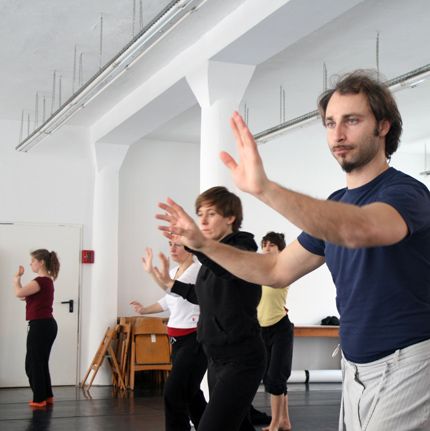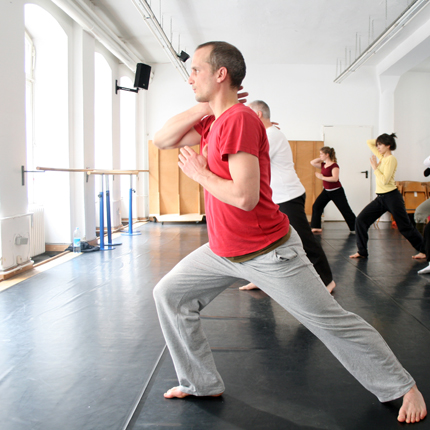“… follow the breath with the inner eye … residual awareness of the point … forwarding down, inhalation back, and up, exhalation forward, and down … sustain the stretch … don’t second-guess your impulse … oops, everyone is not together … once it’s in play you have to deal with it … slide left, sense right, slide right, sense left, slide the left back, sense the left, slide the right back, sense the right …”
A score of words – seemingly transferable to movement with an astonishing ease.
One week in March I am sitting in Tanzfabrik Studio 5 and find myself watching a group of people who seem to be focusing very hard on something. A constant dwelling of words leaves Phillip Zarrilli’s mouth and I wonder – would I be able to react to bring those words into a form, like the individual people seem to be able to. I understand, they’ve been training for about three days already.
It goes on for what feels like a short time. Every now and then Phillip helps, slight, hardly perceivable shifts of a hand, an arm, a lower back. To perceive a body’s outside to be an expression of an inner concentration and focus.
Where I was – at a workshop on psychophysical training led by Phillip Zarrilli. Through Asian Martial Arts and Yoga the workshop introduced a psychophysical approach to awakening the participants’ bodymind for performance. Psychophysical training as Phillip understands it builds on the visions, key principles and insights of Stanislavski, Grotowski, and Artaud. The workshop began with pre-performative psychophysical training to prepare the bodymind through Chinese Taiqiquan, Indian Yoga, and the related Martial Art Kalarippayattu. After an introduction of the principles of basic psychophysical training, they began their application in practice through structured improvisations and explored them as part of a specific performance score.
For more information on our fellow Phillip Zarrilli’s work please also visit his website.



